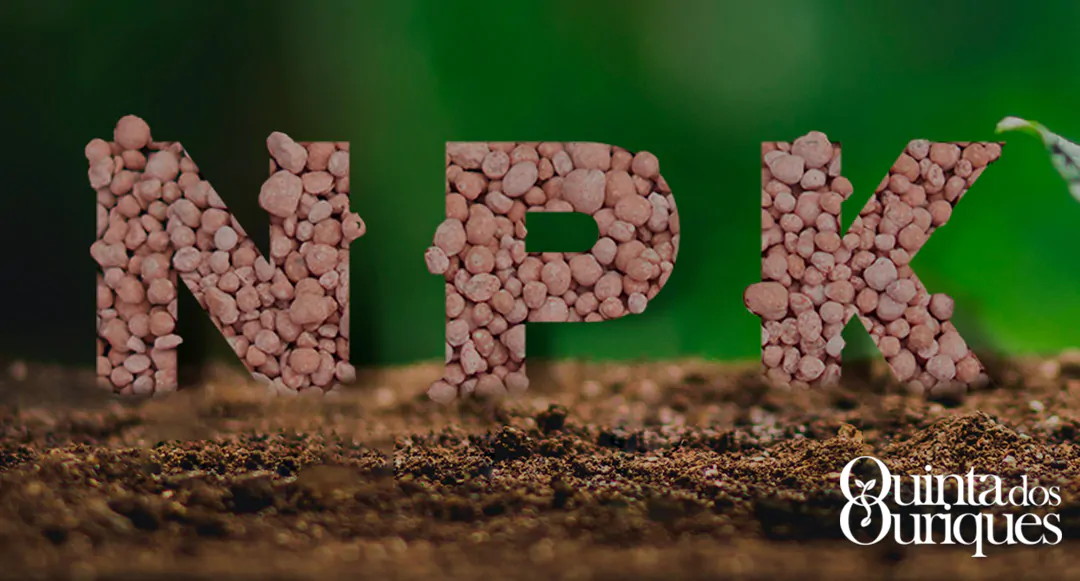
NPK fertilizers can be purchased in different formulas or even have a formula that highlights the element we want and even enriched with micronutrients.
It is the formula of the product that should receive close attention at the time of purchase, expressing it the percentage amount of nutrients. We found NPK on liquid and solid forms. Liquid fertilizers are still often diluted with water for use in leaf spraying or for enrichment of irrigation water.
Nitrogen = N = It is the main agent of plant growth and foliate development. Most of the nitrogen the plant absorbs in the early stages of its life and leaves it stored in its growing tissues. The lack of this element at this early stage slows growth and therefore production. We can generally see that the lack of nitrogen leaves the leaf pale green or yellowish green while the excess produces abundant dark green foliage.
Phosphorus = P = Its presence is indispensable for the plant to turn carbohydrates into sugars. Phosphorus actively participates in the process of cell division. It is one of the direct agents of chlorophyll formation and further enhances root development providing the plant with greater ability to absorb fertile soil elements. It acts directly on fruit quality and seed maturity and deficiency of this element can be noticed when the leaves turn purple.
Potassium = K = Indispensable for starch and sugar production, and for respiration and root development. Without it the plant does not develop. It gets stunted there.
Potassium is absorbed by the plant to a lesser extent and is accumulated in the leaves and stems rather than in fruits.
NPK fertilizers can be purchased in different formulas or even have a formula that highlights the element we want and even enriched with micronutrients. That’s where the fertilizer classification comes in: Nitrogen fertilizers, potassium fertilizers and phosphate fertilizers. We already know that (N) Nitrogen, (P) Phosphorus and (K) Potassium are the 3 elements most required by any plant.
When in a formula the largest element is nitrogen, we say that this fertilizer is nitrogenous and is recommended to stimulate sprouting and shriveling. They are great for general foliage, lawns. The formula will be expressed as a percentage and so when we say: Urea has 45% Nitrogen, we are saying that of every 100 pounds of Urea, 45 is Nitrogen.
When the largest element is Phosphorus or Phosphorus, we say that it is a phosphate fertilizer and that it stimulates the emergence of roots, the increase of flowering and consequently the fruiting and seed production. The application of phosphate fertilizers is very important in regions where frosts occur, as it will increase the resistance of plants to cold and in addition will accelerate fruit ripening.
When the dominant element is potassium (K) it will contribute to the formation of tubers, rhizomes, strengthen plant tissues and increase drought resistance. By giving greater consistency to the plant will make it more resistant against pests and diseases.
| Cookie | Duration | Description |
|---|---|---|
| cookielawinfo-checkbox-analytics | 11 months | This cookie is set by GDPR Cookie Consent plugin. The cookie is used to store the user consent for the cookies in the category "Analytics". |
| cookielawinfo-checkbox-functional | 11 months | The cookie is set by GDPR cookie consent to record the user consent for the cookies in the category "Functional". |
| cookielawinfo-checkbox-necessary | 11 months | This cookie is set by GDPR Cookie Consent plugin. The cookies is used to store the user consent for the cookies in the category "Necessary". |
| cookielawinfo-checkbox-others | 11 months | This cookie is set by GDPR Cookie Consent plugin. The cookie is used to store the user consent for the cookies in the category "Other. |
| cookielawinfo-checkbox-performance | 11 months | This cookie is set by GDPR Cookie Consent plugin. The cookie is used to store the user consent for the cookies in the category "Performance". |
| viewed_cookie_policy | 11 months | The cookie is set by the GDPR Cookie Consent plugin and is used to store whether or not user has consented to the use of cookies. It does not store any personal data. |